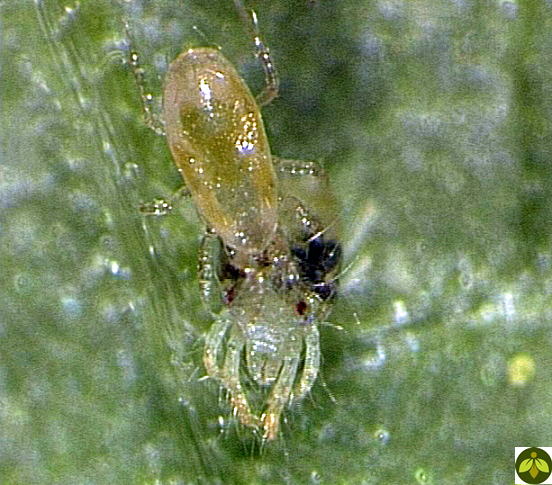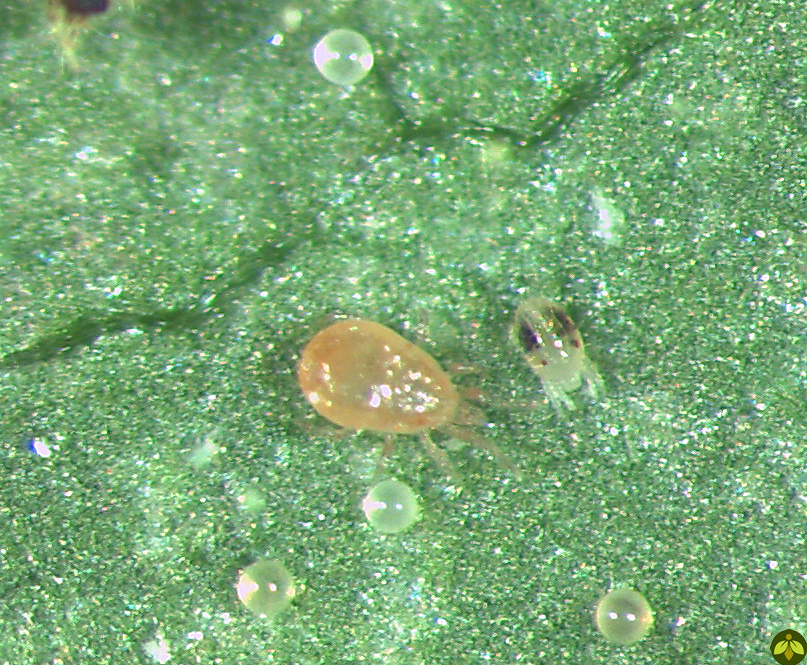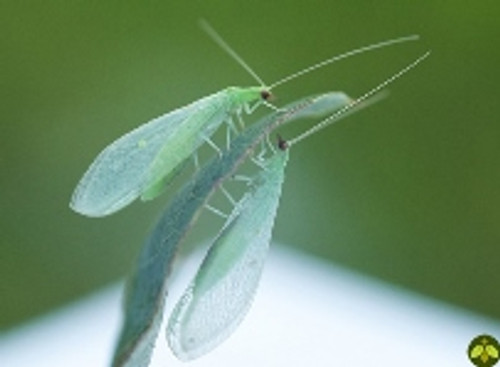Life-style
The females of these mites, which are generally clear-white, lay eggs among pest mites concentrations and in the webbing.
N. californicus can lay up to 43 eggs that hatch into extremely small but hungry larvae like the above mentioned species. The life span of these mites is about 8 days as immatures, then for about 20 days as adults. The conditions for optimum performance will be between 50-110°F with a relative humidity of between 40-60%. Please note, however, considerably cooler and warmer temperatures will hamper reproduction and development a certain degree.
Benefits
N. californicus have the best possible potential for usage in a crop with no mites. These mites also seem to have another benefit in that they are becoming well-known for taking on some of the microscopic mites species. They seem to be the most promising and garner most of the positive feedback.
Scouting
Looking for reduced populations of pest mites is likely the best way to get a handle of what these predators are doing for you in the terms of effectiveness. Look for reduced webbing if you’re using them for larger populations of two-spotted mites. If you’re using them for other purposes, you may have to rely on other means of determination. Seeing them in action, even to the best scouts, is nearly impossible.
Usages
Greenhouses, interiorscapes, botanical gardens, even western orchards and field crops. Look at the current or expected conditions, look at the pests, then determine which mite is best for the particular situation you’re dealing with.Hemp Russet Mite (Aculops cannibacola) and Broad Mite (Polyphagotarsonemus latus)
• Due to microscopic size, early detection is critical for Hemp Russet and Broad Mites
• “Vagrant” feeding on plant tissue causes varying symptoms often misdiagnosed as nutrient deficiencies
• Current management strategies are the same for both species of mites
• Broad mite eggs have a distinct dimpled “jeweled” appearance (a target when scouting)
• BCAs include: N. fallacis, N. californicus, A. andersoni, A.cucumeris
Two Spotted Spider Mite (Tetranychus urticae)
• Produces complex system of webbing that helps them move from plant to plant, is used to lay eggs, and is used to protect from predators or pesticides (the webbing must be removed prior to treatment)
• Life cycle from egg to adult shortens in higher temperatures, causing population explosion in outdoor/greenhouse crops in summer
• BCAs include: P. persimilis, N. fallacis, N. californicus, F. acarisuga, C. rufilabris*
Release Rates for Neoseiulus californicus
| Classification | Release Information |
|---|---|
| Low infestation | 0.5 per square feet; regular releases are recommended. |
| Hot spots | 2 per square feet |
| Comments | For use in areas where little to no prey mites exist. Works well for prevention. Also useful for other mites. |










